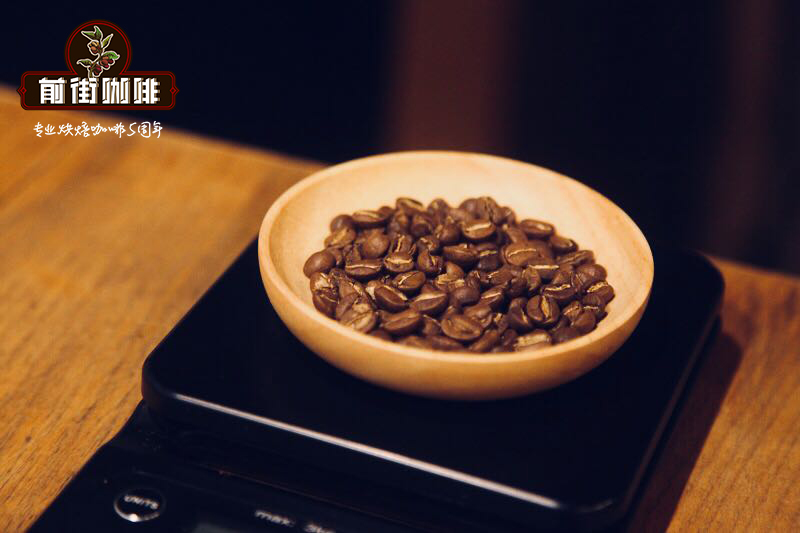Laos also produces coffee? What is Laos coffee? What kind of coffee does Laos mainly produce?

Professional coffee knowledge exchange more coffee bean information please follow the coffee workshop (Wechat official account cafe_style)
Coffee rookies may not know that Laos also produces coffee, or they may not know it very well, but they have only heard of it, so let's learn more about Laos coffee today.
Topography and climate
Laos is 80% mountainous and plateau, and mostly covered by forest, known as the "roof of Indochina."
The terrain is high in the north and low in the south, bordering the western Yunnan Plateau of Yunnan in the north, the Changshan Mountains on the border between Laos and Vietnam in the east, and the Mekong Valley and basins and small plains along the Mekong River and its tributaries in the west.
The whole country is divided into Shangliao, Zhongliao and Xialiao from north to south. Shangliao is the highest, with an elevation of 2000,000m above sea level on the Chuan-Yan plateau and 2820 m above sea level on Mount Pubia.
Laos has a tropical and subtropical monsoon climate, with a rainy season from May to October and a dry season from November to April. The annual average temperature is about 26 ℃. There is abundant rainfall in Laos, with the youngest annual precipitation of 1250 mm, the maximum annual precipitation of 3750 mm, and the average annual precipitation of about 2000 mm.

Cultural background
Laos is unique among many Southeast Asian countries and is deeply influenced by Indian culture, not the Chinese. In the first century AD, Indian businessmen established a trade route to Laos, and soon Buddhism was introduced into Laos. Up to now, Buddhism is still the dominant religion in Laos.
From the 14th century to the 18th century, Laos experienced a period of prosperity as well as threats from different countries. Eventually, Laos was divided into three regions: Luang Prabang in the north, Vientiane in the middle and Bassai in the south.
This separatist regime weakened the national strength of Laos and was finally conquered by Siam (present-day Thailand). After many uprisings, Laos's attempt to overthrow Siam ended in failure.
Introduction to Laos Coffee
Coffee was first introduced into Laos during the French occupation in the late 1890s and 1950s. At first, coffee was grown in the north, but it was later found that the area was not suitable for the planting methods used at that time.
In 1949, coffee crops also experienced a huge frost, along with other factors, which led to the shift of coffee production to southern Laos near the Boloven plateau in Barcelona.
When Lao farmers realized a series of problems such as frost, disease and low yield, they began to grow Arabica coffee into a more resilient robusta coffee.
Although most coffee production in Laos today is still Robusta, there are still many farmers who grow and harvest some great Arabica coffee.
Coffee variety
Around 1920, French settlers began to grow coffee, mainly Arabica iron pickup and bourbon, on the Brawan plateau in southern Laos.
From 1940 to 1990, under the influence of external environment, such as war, agricultural disasters (mainly frost and leaf rust) and national policy, coffee varieties were gradually replaced by Robota species with stronger disease resistance and higher yield, and there were also a few Liberika species.
After 1990, the Arabica species began to receive renewed attention.
At present, the output of Robusta is still in the majority.
Traditional coffee producing areas: Bolaven Plateau, Brawan Plateau
Bolaven Plateau, Brawan Plateau, the name comes from the region's most populous ethnic group "the Laven", which originally means "the home of the Lavan people". It is located between the Annan Mountains, the border between Laos and Vietnam to the east, and the Mekong River to the west at an altitude of about 1000 to 1350 meters (3300 to 4430 feet).
The Brawan Plateau has the longest history of coffee cultivation in Laos, and it is also the region with the widest planting area and the largest coffee production. Among them, the three areas covered by the plateau (namely, Basong Paksong in Basong province, Thateng in Saravan province and Laongam in Sekong province) account for 95 per cent of the total coffee production in Laos. The coffee planting area in the three regions is about 70000ha.
In addition to the three areas mentioned above, coffee is also produced in other areas of the Brawan Plateau.
In addition, coffee is also grown in the northern provinces on a smaller scale.
Will you know more about Laos coffee through the detailed introduction above?
Important Notice :
前街咖啡 FrontStreet Coffee has moved to new addredd:
FrontStreet Coffee Address: 315,Donghua East Road,GuangZhou
Tel:020 38364473
- Prev

What are the coffee producing areas in Burundi? What are the flavor characteristics of Burundi Bwayi microbatches?
Professional coffee knowledge exchange More coffee bean information Please pay attention to the characteristics of coffee workshop (Weixin Official Accounts cafe_style) Burundi coffee: Burundi (Burundi) has the most diverse and successful coffee industry in the world, and has its own characteristics. Burundi coffee has a strong aroma and excellent acidity. Flavor: Full-bodied, aromatic, acidic
- Next

A detailed account of the story of Laos coffee-the culture and amorous feelings of Laos coffee-the present situation of Laos coffee market
Professional coffee knowledge exchange more coffee bean information please follow the coffee workshop (Wechat official account cafe_style) Laos coffee history: Laos is a region once colonized by France, and the coffee industry in Laos can be traced back to the French colonial era, when the French found that the soil of the Bolaven Plateau Plateau of Laos is rich in minerals and the plateau is high.
Related
- Detailed explanation of Jadeite planting Land in Panamanian Jadeite Manor introduction to the grading system of Jadeite competitive bidding, Red bid, Green bid and Rose Summer
- Story of Coffee planting in Brenka region of Costa Rica Stonehenge Manor anaerobic heavy honey treatment of flavor mouth
- What's on the barrel of Blue Mountain Coffee beans?
- Can American coffee also pull flowers? How to use hot American style to pull out a good-looking pattern?
- Can you make a cold extract with coffee beans? What is the right proportion for cold-extracted coffee formula?
- Indonesian PWN Gold Mandrine Coffee Origin Features Flavor How to Chong? Mandolin coffee is American.
- A brief introduction to the flavor characteristics of Brazilian yellow bourbon coffee beans
- What is the effect of different water quality on the flavor of cold-extracted coffee? What kind of water is best for brewing coffee?
- Why do you think of Rose Summer whenever you mention Panamanian coffee?
- Introduction to the characteristics of authentic blue mountain coffee bean producing areas? What is the CIB Coffee Authority in Jamaica?

